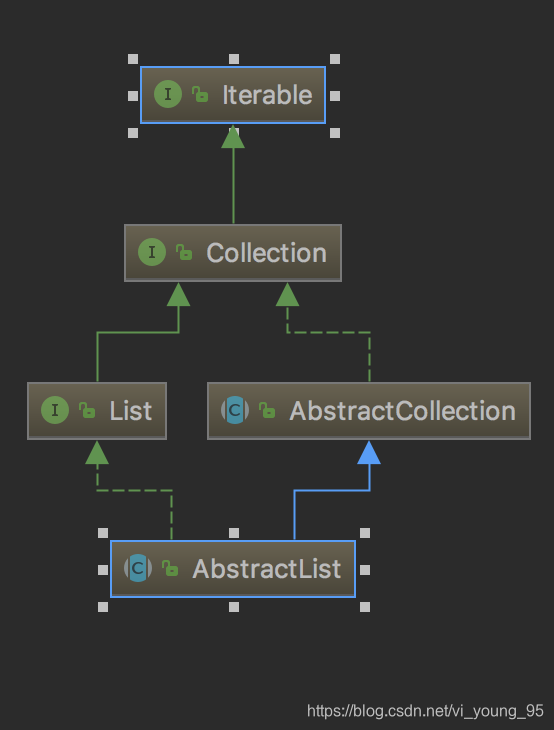Java基礎系列(四十二):集合之AbstractList
阿新 • • 發佈:2018-12-01
前言
AbstractList是實現List介面的一個抽象類,它的地位之與List類似於AbstractCollection之與Collection,同事,AbstractList繼承了AbstractCollection,並針對List介面給出了一些預設的實現。而且它是針對隨機訪問儲存資料的方式的,如果需要使用順序訪問儲存資料方式,還有一個AbstractSequentialList是AbstractList的子類,順序訪問時應該優先使用它。
框架圖

原始碼
接下來,我們來看一下AbstractList的原始碼,看看他針對於List介面相較於AbstractCollection
package java.util;
public abstract class AbstractList<E> extends AbstractCollection<E> implements List<E> {
//只提供了一個protected修飾的無參構造器,供子類使用。
protected AbstractList() {
}
//新增一個元素,實際上並沒有實現。
public boolean add(E e) {
//實際上,size()在這個方法中並沒有實現,交由子類去實現。
